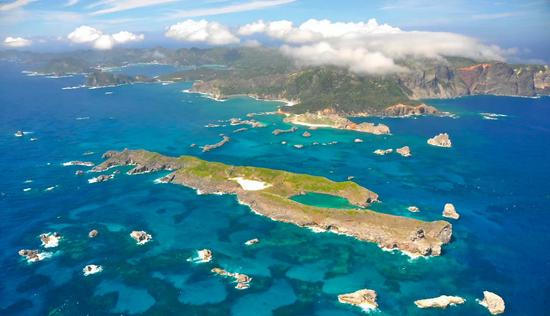Amami-Oshima Island, Tokunoshima Island, Northern part of Okinawa Island, and Iriomote IslandWorld Natural Heritage Site
About World Heritage Sites
A World Heritage Site refers to a cultural or natural asset of universal value, inspiring awe and appreciation among people worldwide. These treasures are our shared heritage, meant to be safeguarded and passed down to future generations.
There are three types of World Heritage Sites: Cultural Heritage, Natural Heritage, and Mixed Cultural and Natural Heritage. For a site to qualify as Natural Heritage, it must meet at least one of the following four criteria: “natural beauty,” “geomorphic or physiographic features,” “ecosystems,” and “biological diversity.”
The "Amami-Oshima Island, Tokunoshima Island, Northern part of Okinawa Island, and Iriomote Island" World Heritage Site met the criteria for "biological diversity," acknowledging the region's unique ecosystems and species. It also fulfilled the “conditions of integrity" by including all elements necessary to express its Outstanding Universal Value (OUV), covering an area of adequate size, and preserving its natural state. Additionally, the site ensured adequate “protection and management." With these requirements met, the region was designated as Japan's fifth Natural World Heritage Site.

These four islands, though small in size, are among the most biologically diverse areas in Japan.
In Amami-Oshima Island, Tokunoshima Island, Northern part of Okinawa Island, and Iriomote Island, many endangered species and endemic species live or grow. The biodiversity of the area is prominently high even among the Japanese archipelago, which is often referred to as the hotspot of biodiversity in the world.
Number of Species and Proportion ofEndemics in the Four Areas
This series of pie charts shows the proportion of species that can be found within the World Heritage Site compared to the total species found across Japan. In particular, mammals such as the Tokunoshima spiny rat and amphibians like the Amami tip-nosed frog and Raffaëlli’s spiny crocodile newt show a particularly high proportion of endemism within the region.

The Mountains and Plateaus of Tokunoshima
Tokunoshima Island is the second largest island among the Amami Islands. Subtropical rainforests covering mountains such as Mt. Inokawadake (645 m), Mt. Amagidake (533 m), and Mt. Inutabudake (417 m), are home to rare and endemic animals and plants, including the Amami rabbit, which is also found in Amami-Oshima Island, the banded ground gecko, the Tokunoshima spiny rat, and Arisaema kawashimae.
Plateaus, formed from Ryukyu limestone, harbor forests of plants that thrive in limestone-rich environments. This plays a key role in shaping the natural characteristics of the island.







Invitation to an eco-tour that allows visitors to fully enjoy the nature of Tokunoshima Island
A hands-on tour guided by a certified eco-tour guide is implemented to enable people to understand the value of the environment, culture, and climate, and the preservation thereof, through time spent in nature and settlements.

Japan's World Natural Heritage Sites
In addition to Amami-Oshima Island, Tokunoshima Island, Northern part of Okinawa Island, and Iriomote Island, other areas such as Shiretoko, Shirakami-Sanchi, Yakushima Island, and the Ogasawara Islands have also been designated as World Natural Heritage Sites in Japan. These regions are protected and managed through various conservation laws and systems, including designation as national parks and forestry ecosystem preservation areas.
Amami-Oshima Island, Tokunoshima Island, Northern part of Okinawa Island, and Iriomote Island
Criteria: biological diversity-
Amami-Oshima Island

-
Northern part of Okinawa Island

-
Iriomote Island





